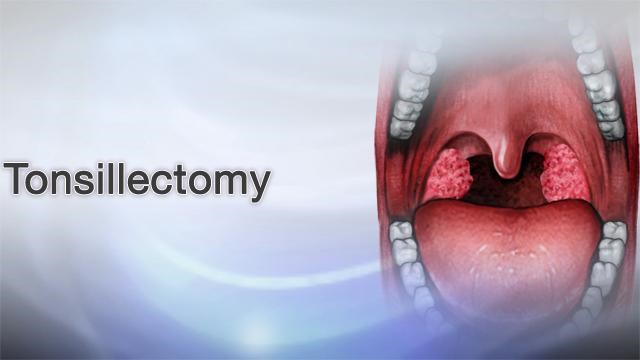
A Tonsillectomy is a 30 to 45-minute surgical procedure performed under general anesthetic to remove tonsils. To consider tonsillectomy consultant the best Tonsillectomy surgeon in Bangalore Dr. SHALINA RAY.
Tonsil removal surgery is usually recommended if you have the following:
- Recurrent tonsillitis and sore throats – where your tonsils are inflamed, usually due to an infection.
- Breathing difficulties – swollen or too large tonsils can cause problems with breathing and swallowing.
- Sleep problems, including snoring and apnoea - enlarged tonsils can cause these.
- If you have an ulcer or growth on the tonsil.
There are several different surgeries to remove your tonsils that, include:
- Dissection is the most common method for cutting out your tonsils using regular instruments.
- Coblation – surgery removes your tonsils and typically has less pain, less bleeding, and a shorter recovery time than a dissection.
- Diathermy - high-frequency electrical current cuts your tonsil tissue.
Pediatric Tonsillectomy
Tonsillitis typically occurs when children go to school or nursery as they encounter more germs and infections. It is seen less as a child’s tonsils start to shrink in size. The peak incidence of tonsillitis and its surgery is from age four to seven. Tonsillitis is relatively uncommon after age 15.
This means that children younger than two years old rarely have their tonsils removed, but children as young as 12 months can have a tonsillectomy if medically indicated.
Adult Tonsillectomy
The tonsils are two small masses of tissue at the back of the throat. They are part of the body’s immune system. This system helps the body fight disease. In some people, the tonsils become infected or enlarged. This can cause severe sore throats, snoring, or other problems. Tonsillectomy is surgery to take out the tonsils. Tonsillectomy may be advised if you have obstruction causing sleep apnea. Or you may need surgery if you have recurring, chronic, or severe infections.
No matter how old someone is, anyone can get frequent throat infections, so children and adults could need a tonsillectomy. ENT surgeons regularly perform this surgery, which is very common. However, adults and children experience tonsillectomies differently.
The procedure for both adults and children is the same. The patient stops taking all their medication and fasts the night before surgery. The next day, the patient is put under general anesthesia. This ultimately makes the patient unconscious and asleep for the whole procedure. Overall, the procedure takes about 20 minutes to an hour for both big and small patients.
The difference between adult vs. pediatric tonsillectomy lies in the recovery stage. Children only need a week or so to recover, while an adult may need around two weeks before they are symptom free. This is because children heal faster than adults do. Studies have also shown that children are less likely to develop late-term bleeding days after their procedure. Postoperative bleeding is not a common side effect for adults, but it can happen a few days to a couple of weeks after the procedure. I recommend drinking plenty of water and sticking to soft cold foods during recovery.
Conventional Tonsillectomy
Traditional dissection tonsillectomy has remained the gold standard for tonsil removal for over a century and is generally very effective.
Traditional tonsillectomy leaves the wound open to heal by secondary intention, thus causing pain and bleeding as two major postoperative complications. This is why pioneers usually concentrate on decreasing these two problems by comparing various techniques.
Conventional tonsillectomy may result in longer periods of wound recovery. Considering the morbidities, attempts have been made to improve the outcome by developing new techniques with less postoperative pain and a short recovery period. Available techniques include cold-knife dissection, guillotine excision, electrocautery, cryosurgery, the harmonic scalpel, laser tonsillectomy, bipolar diathermy dissection, radiofrequency and coblation methods.
Coblation for Tonsillectomy
Tonsils and adenoids are tissues near the throat that filter out germs entering through the nose and mouth. They’re part of the lymphatic system, which plays a role in circulation and immune function. When a child’s tonsils or adenoids become infected or enlarged, they may interfere with breathing and sleeping. A tonsillectomy or adenoidectomy (removal of the tonsils or adenoids) may be necessary to resolve these problems.
A common way to perform these procedures is to use heat to cut and destroy – or cauterize – the tissue. The heat inevitably injures some of the surrounding tissue, which can result in a long, painful post-op period. But we offer a procedure called coblation that reduces recovery time and pain.
Coblation (a word derived from “controlled ablation” involves using low-temperature radiofrequency and a saline solution to gently and precisely remove the problematic tissues. The risk of injury to surrounding tissue is much lower than with cautery, and patients return to normal activities more quickly.
Coblation Assisted- Advanced Tonsillectomy (Tonsil Surgery) & Adenoidectomy
Benefits:
- Minimally invasive
- Minimal Blood-loss
- No Pain

